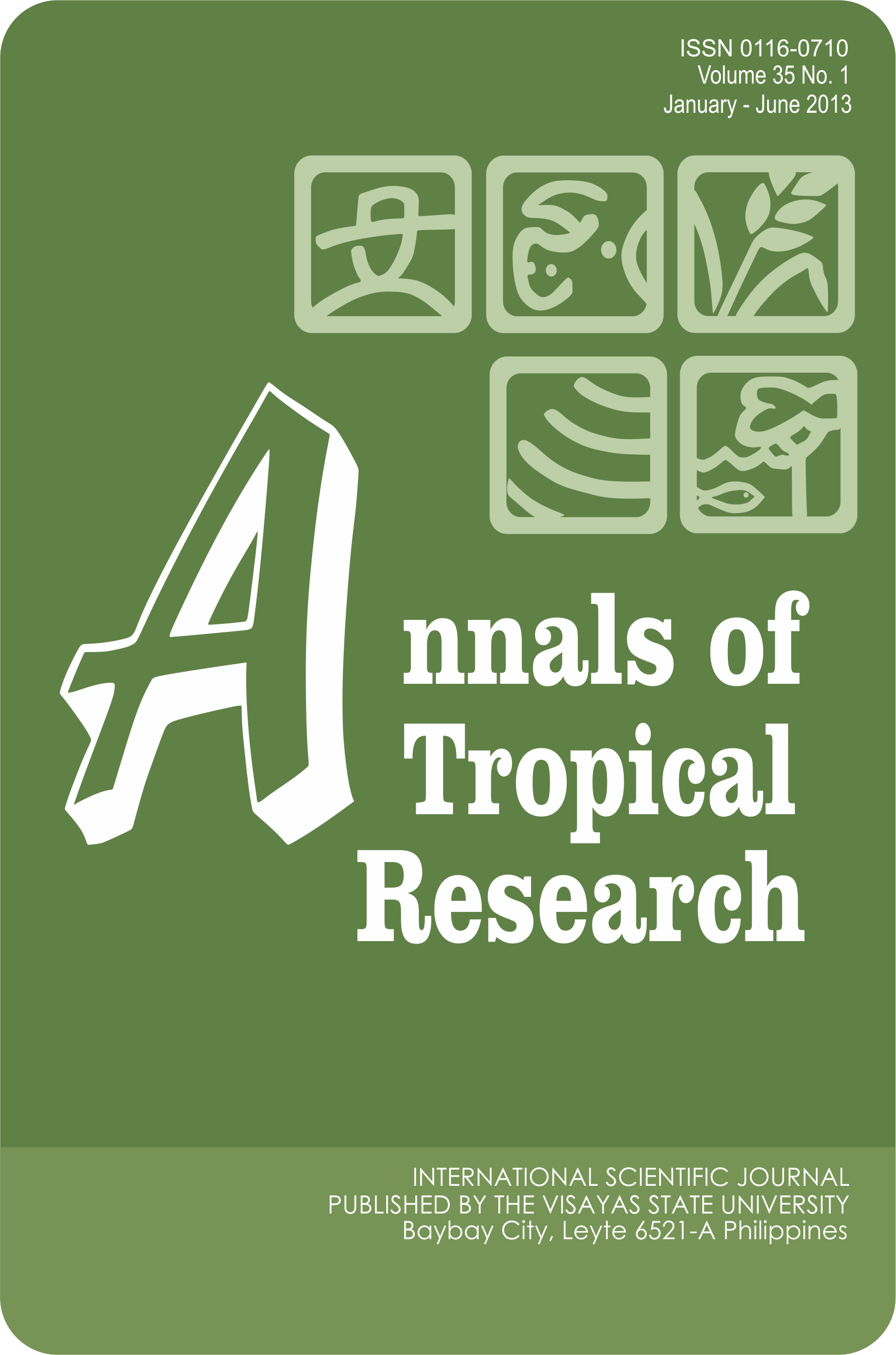Morpho-Physical and Chemical Characteristics of Mountain Soils in Central Leyte
DOI:
https://doi.org/10.32945/atr3514.2013Keywords:
volcanic soil, sedimentary soil, Leyte central highlands, soil characteristicsAbstract
An important prerequisite to sustainable soil management is a good understanding of soil morphological, physical and chemical characteristics. Until now, very limited data are available on the characteristics of mountain soils in the central part of Leyte Island. Thus, this study was conducted to determine the morpho-physical and chemical characteristics of mountain soils derived from andesite and shale in central Leyte, and to evaluate the effects of parent material and topographic position on the properties of the soils.
Eight soil profiles representing the dominant parent materials and topographic positions in the Abuyog-Mahaplag-Baybay portion of the central mountain range of the island were examined. Results revealed that the soils varied in their morphological, physical and chemical characteristics which to some extent reflect the nature of their parent material and the slope positions where they were formed. Soils derived from shale (Soil profiles 1, 2, 3 and 6) developed into young (Fluventric Eutropepts) and well-developed (Typic Hapludalfs) soils with generally moderate nutrient status. Soils derived from andesite (Soil profiles 4, 5, 7 and 8) developed into young (Typic Dystropepts) and well-developed (Typic Kandiudults) soils with generally low nutrient status. Regardless of parent material, soils on summit slope position tended to be better developed than soils on footslope and shoulder slope positions. The study showed that the influence of parent material on soil development was modified by the topographic position.
Downloads
Submitted
Published
How to Cite
Issue
Section
License

This work is licensed under a Creative Commons Attribution-NonCommercial-ShareAlike 4.0 International License.











